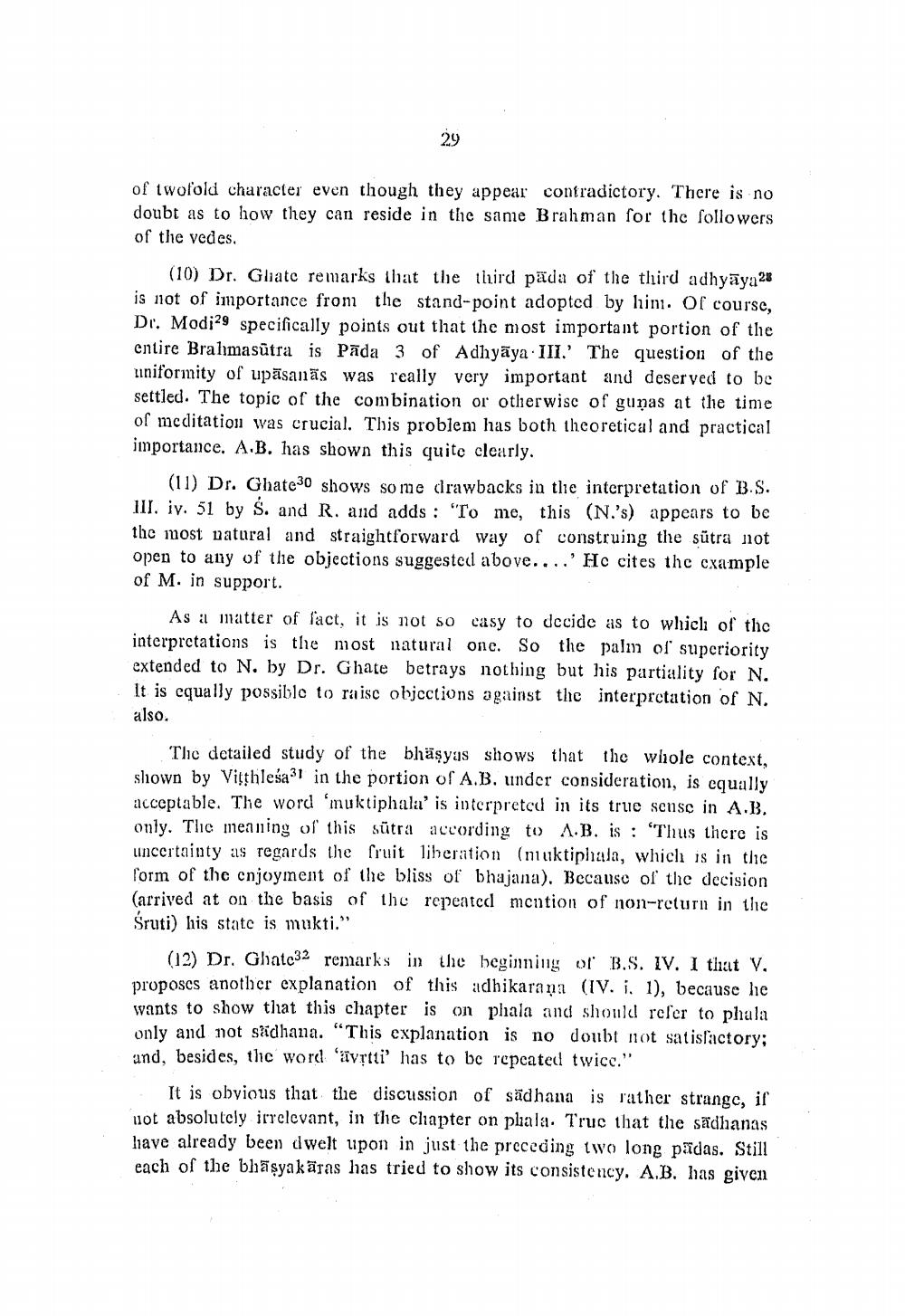________________
29
of twofold character even though they appear contradictory. There is no doubt as to how they can reside in the same Brahman for the followers of the vedes.
(10) Dr. Gliate remarks that the third päda of the third adhyāya 28 is not of importance from the stand-point adopted by him. Of course, Dr. Modi29 specifically points out that the most important portion of the entire Brahimasutra is Pāda 3 of Adhyāya 1I1.' The question of the uniformity of upāsanäs was really very important and deserved to be settled. The topic of the combination or otherwise of guņas at the time of meditation was crucial. This problem has both theoretical and practical importance. A.B. has shown this quite clearly.
(11) Dr. Ghate30 shows some drawbacks in the interpretation of B.S. III. iy. 51 by S. and R. and adds : "To me, this (N.'s) appears to be the most natural and straightforward way of construing the sutra not open to any of the objections suggested above....'He cites thc cxample of M. in support.
As a matter of fact, it is not so easy to decide as to which of the interpretations is the most natural one. So the palm of superiority extended to N. by Dr. Ghate betrays nothing but his partiality for N. It is equally possible to raise objcctions against the interpretation of N. also.
The detailed study of the bhäşyas shows that the whole context, shown by Vitthleśa31 in the portion of A.B. under consideration, is cqually acceptable. The word 'muktiphala' is interpreted in its true scuse in A.B. only. Tlic meaning of this sūtra according to A.B. is: 'Thus there is uncertainty as regards the fruit liberation (nuktiphala, which is in the form of the enjoyment of the bliss of bhajana). Because of the decision (arrived at on the basis of the repeated mention of non-return in the Śruti) his state is mukti.”
(12) Dr. Ghatc32 remarks in the beginning of B.S. IV. I that V. proposcs another explanation of this adhikarana (IV. i. 1), because he wants to show that this chapter is on phala and should refer to phala only and not skidhana. "This explanation is no doubt not satisfactory; and, besides, the word 'avrtti' has to be repeated twice."
It is obvious that the discussion of sādhana is rather strange, if not absolutely irrelevant, in the clapter on phala. Truc that the sadhanas have already been dwelt upon in just the preceding two long pädas. Still each of the bhäşyakäras has tried to show its consistency. A.B. has given




